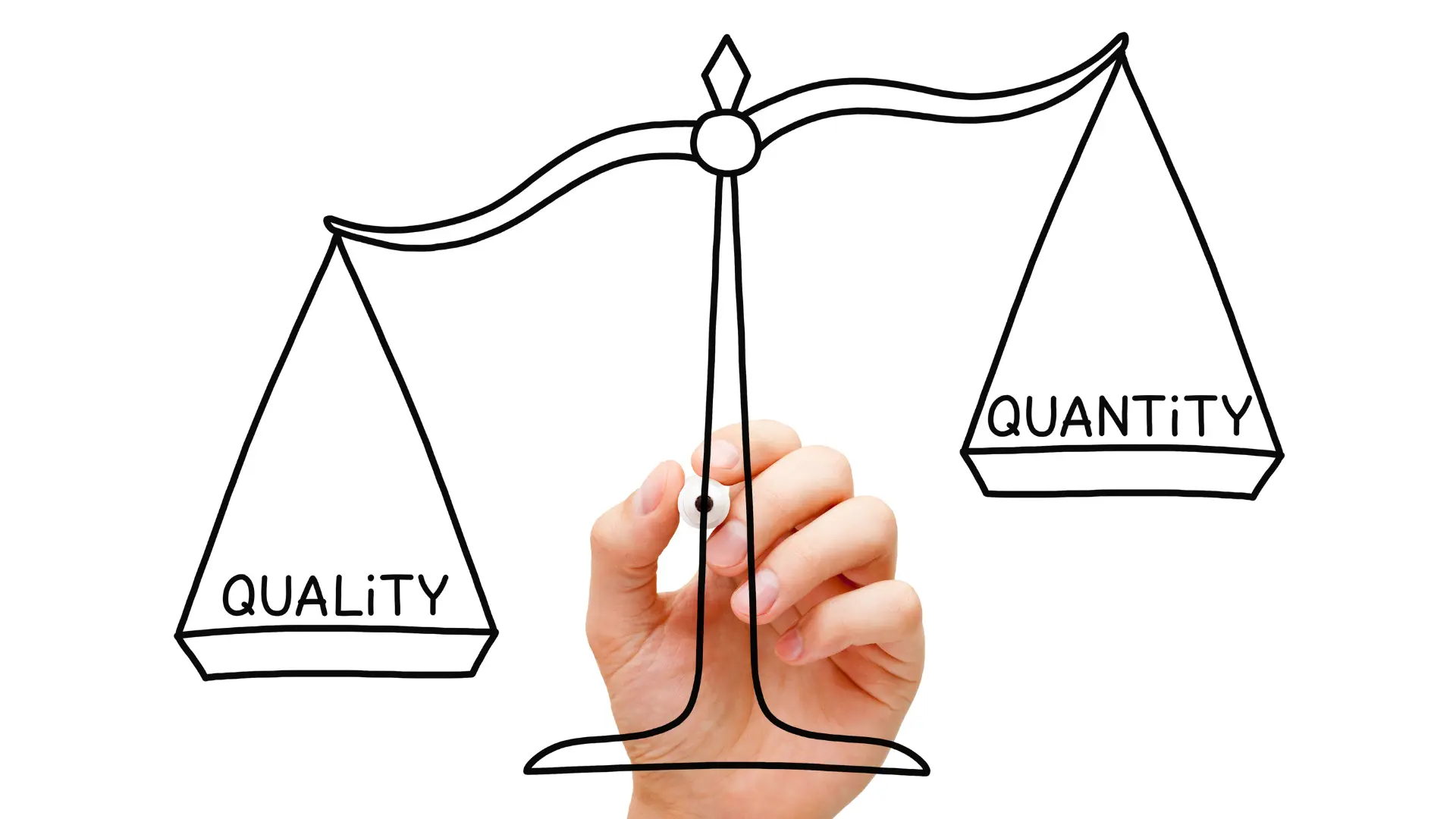Walk into any entrepreneur networking event, and you’ll hear the same bragging rights being traded: “We hit $5 million in revenue this year.” “We’re growing 40% year-over-year.” “Our sales team just landed our biggest client ever.” Revenue growth has become the universal scorecard for business success, the metric that gets celebrated at industry conferences and highlighted in press releases. Yet, sophisticated buyers focus on profit-generating systems and operational metrics captured by the four pillars of acquisition, not just revenue.
Here’s what those entrepreneurs don’t realize: sophisticated buyers couldn’t care less about your revenue growth.
That might sound shocking, especially if you’ve spent years obsessing over top-line growth, but it’s the brutal truth about how businesses are actually valued. After analyzing hundreds of acquisition opportunities, I can tell you that revenue-focused businesses often sell for less than smaller, more strategically operated competitors. The reason? Buyers don’t purchase revenue. They purchase profit-generating systems with predictable, sustainable returns.
The Data Behind Valuation Reality

Let me start with hard numbers that will reshape how you think about business value. According to BizBuySell’s 2023 market analysis of over 12,000 business sales, companies with EBITDA margins above 15% sell for average multiples of 4.2x revenue, while businesses with margins below 10% average only 2.1x revenue multiples. That’s a 100% difference in valuation despite comparable revenue levels.
Pepperdine University’s 2023 Private Capital Markets Report, analyzing $50 billion in middle-market transactions, found that profit margin improvements have 3.7x more impact on business valuations than equivalent percentage increases in revenue growth rates. The study tracked 1,200 businesses over five years and discovered that companies focusing on margin improvement achieved 34% higher exit valuations than those prioritizing revenue expansion.
PwC’s Global M&A Trends analysis reveals an even starker reality: businesses that improved EBITDA margins by 200+ basis points over three years achieved 47% higher sale multiples than comparable businesses that focused primarily on revenue growth, even when the revenue-focused companies achieved faster top-line expansion.
The mathematical reality is inescapable. MIT Sloan’s analysis of business valuation drivers found that sustainable 1% margin improvements increase enterprise value by an average of 8-12%, while 10% revenue growth typically increases value by only 6-8% when margins remain constant. This occurs because business valuations are based on multiples of cash flow or EBITDA, not revenue.
What Buyers Actually Pay For: The Four Pillars

When sophisticated buyers evaluate acquisition opportunities, they focus on the four pillars of acquisition, four fundamental value drivers that research consistently shows determine acquisition prices and terms.
Predictable cash flow represents the primary value driver. The Exit Planning Institute’s analysis of 800 successful business sales found that cash flow predictability accounts for 67% of valuation variance between similar businesses. Companies with cash flow volatility below 15%, measured by three-year standard deviation, sell for 35% higher multiples than those with high volatility, regardless of average cash flow amounts. Understanding this key factor is central to the four pillars of acquisition approach that separates high-value businesses from founder-dependent operations.
University of Pennsylvania’s Wharton School research tracking 500 acquisitions discovered that buyers pay premiums averaging 28% for businesses demonstrating consistent quarterly cash flow compared to those with seasonal or unpredictable patterns, even when annual totals are similar. Predictability reduces buyer risk, and reduced risk translates directly into higher valuations.
Scalable operations provide the second critical value driver. McKinsey’s analysis of 2,000 middle-market acquisitions shows that businesses demonstrating operational scalability, where incremental revenue generates disproportionately higher profits, command multiples 31% higher than those with linear cost structures. The research identified operational leverage as the second-most important factor in acquisition pricing after cash flow predictability.
Harvard Business School’s study of acquisition premiums found that companies with documented scalability metrics, such as decreasing marginal costs, improving efficiency ratios, or expanding profit margins with growth, receive 26% more acquisition interest and 22% higher final offers than businesses unable to demonstrate scaling advantages.
Market position strength creates sustainable competitive advantages that buyers value highly. Research from the Corporate Strategy Board analyzing 1,500 acquisitions found that businesses with demonstrable competitive advantages maintain 43% higher profit margins over five-year periods and command acquisition premiums averaging 38% compared to businesses competing primarily on price.
Boston Consulting Group’s analysis of sustainable competitive advantages in middle-market companies shows that businesses with strong market positioning maintain pricing power that results in 23% higher EBITDA multiples during acquisition compared to competitors without clear differentiation.
Management systems independence represents the fourth pillar of acquisition value and completes the framework known as the four pillars of acquisition. The International Business Brokers Association’s 2023 comprehensive study found that businesses with documented management systems and operational independence sell for 41% higher multiples than founder-dependent companies, regardless of current revenue levels. The study analyzed over 3,000 transactions and found this factor alone explains more valuation variance than industry, growth rate, or geographic location.
The Quality Revenue Distinction

Not all revenue creates equal value, and sophisticated buyers understand these critical distinctions. PwC’s analysis of revenue quality factors shows that recurring revenue commands 2.3x higher valuations than transactional revenue, contract-based revenue sells for 1.8x higher multiples than project-based income, and diversified customer bases with no single customer above 15% of revenue achieve 29% higher acquisition prices. These insights align closely with the four pillars of acquisition, which emphasize predictable and sustainable business value over raw revenue growth.
The Software Equity Group’s research on recurring revenue businesses found that companies with 80% or higher recurring revenue achieve average valuations of 6.2x revenue, while comparable businesses with primarily transactional revenue average 2.8x revenue multiples. That’s a 121% valuation premium for revenue predictability alone.
Customer concentration dramatically affects how buyers value revenue streams. Harvard Business Review’s analysis of acquisition risk factors found that businesses with high customer concentration, where the top 3 customers represent more than 50% of revenue, experience 34% lower acquisition interest and 28% reduced final valuations compared to businesses with diversified customer bases, even when total revenue and growth rates are identical. Understanding these patterns is essential for applying the four pillars of acquisition methodology in real-world valuation scenarios.
The Exit Planning Institute’s study of failed acquisitions found that customer concentration issues caused 23% of deal failures during due diligence, making revenue diversification a critical factor in successful business sales. Contract length and customer switching costs provide additional revenue quality indicators that buyers scrutinize carefully.
The Sustainability Factor in Growth Valuation

Stanford Graduate School of Business research distinguishes between “value-creating growth” and “value-destroying growth” based on five-year acquisition outcome analysis. The study found that 67% of high-growth businesses actually destroyed value for acquirers when growth came at the expense of profitability, operational efficiency, or market position strength. Understanding these outcomes is critical for applying the four pillars of acquisition, which prioritize sustainable and predictable business value over mere top-line expansion.
Value-creating growth demonstrates specific characteristics that buyers recognize and reward. Organic customer acquisition through referrals, repeat business, and market expansion indicates strong value propositions and customer satisfaction. This type of growth typically requires minimal ongoing investment and suggests sustainable competitive advantages—key metrics aligned with the four pillars of acquisition framework.
Margin-positive expansion, where revenue growth maintains or improves profit margins, demonstrates operational leverage and pricing power. McKinsey’s research found that businesses achieving margin-positive growth command 43% higher acquisition multiples than those growing through margin compression or increased marketing spend.
Market share gains within stable or growing markets suggest competitive strength rather than just riding industry trends. Deloitte’s analysis of acquisition performance found that companies gaining market share achieve 31% better post-acquisition results than those expanding primarily through new market entry or industry growth.
The Operational Excellence Advantage

While competitors chase revenue growth, businesses focusing on operational excellence create measurable advantages that translate directly into higher valuations. Research consistently shows these operational factors drive acquisition value more than revenue metrics.
Process efficiency creates scalable competitive advantages. McKinsey’s operational excellence research found that businesses with documented, repeatable processes achieve 67% better acquisition outcomes because they demonstrate scalability and reduce buyer integration risk. Companies with systematic operational approaches show 31% lower variance in financial performance and 24% higher customer satisfaction scores.
Bain & Company’s analysis of 300 successful acquisitions found that businesses with strong operational systems require 43% less post-acquisition management attention and achieve integration milestones 28% faster than operationally weak companies.
Financial discipline provides another critical operational advantage. The National Association of Corporate Directors’ research on acquisition readiness shows that businesses with clean financial management practices, including accurate forecasting, disciplined capital allocation, and effective cost control, achieve 32% higher valuations and 26% faster sale timelines.
Deloitte’s financial management study found that companies with monthly financial reporting, rolling 12-month forecasts, and documented budgeting processes command 29% higher acquisition multiples because they demonstrate management competence that reduces buyer risk.
Building Value Through Strategic Focus

Academic research provides clear guidance on building acquisition value through operational excellence rather than revenue obsession. The Corporate Executive Board’s analysis of value creation strategies shows that businesses following evidence-based value-building approaches aligned with the four pillars of acquisition achieve 52% better acquisition outcomes than those focusing primarily on growth metrics. Integrating the four pillars of acquisition into strategic planning ensures that operational decisions consistently drive sustainable business value.
Profit source analysis represents the foundation of value building. MIT Sloan’s research on business optimization found that companies conducting systematic profit source analysis and focusing resources on high-margin activities—key components of the four pillars of acquisition—achieve 38% better financial performance and 27% higher acquisition interest than businesses pursuing undifferentiated growth strategies.
Scalable systems investment provides measurable returns both operationally and in valuation. Stanford’s research on technology and systems investment shows that businesses implementing scalable operational systems see average ROI of 340% within 24 months through improved efficiency and reduced labor costs, while also achieving 23% higher acquisition valuations due to demonstrated scalability.
Customer relationship strengthening often provides better returns than customer acquisition. Harvard Business School’s customer lifetime value research indicates that businesses improving customer retention from 85% to 95% increase enterprise value by an average of 45-55%, while 20% improvements in customer acquisition typically increase value by only 8-12%. These results highlight the importance of strategies aligned with the four pillars of acquisition, which emphasize sustainable, predictable value creation over short-term growth metrics. Incorporating the four pillars of acquisition into customer relationship management ensures that retention and loyalty directly contribute to higher business valuations.
The Long-Term Value Creation Strategy

Wharton’s longitudinal study of business value creation tracked 250 companies over seven years and found that businesses focusing on operational excellence and profitability consistently outperformed revenue-focused competitors in both current cash flow generation and ultimate acquisition values. These findings align directly with the four pillars of acquisition, which emphasize predictable cash flow, scalable operations, strong market position, and management systems independence.
The research showed that operationally excellent businesses provide 43% better cash flow to owners during the holding period, require 67% less additional capital investment for growth, and ultimately sell for 34% higher multiples when owners decide to exit. Companies following operational excellence strategies—key components of the four pillars of acquisition—also attract 78% more qualified buyer interest, complete sales 31% faster, and experience 45% fewer deal complications during due diligence, according to the International Business Brokers Association’s comprehensive acquisition process analysis.
The evidence is overwhelming: your business value isn’t determined by how much you sell. It’s determined by how efficiently and predictably you convert that activity into sustainable profits. Focus on building operational excellence, and you’ll create both a more valuable business and a more enjoyable ownership experience.



